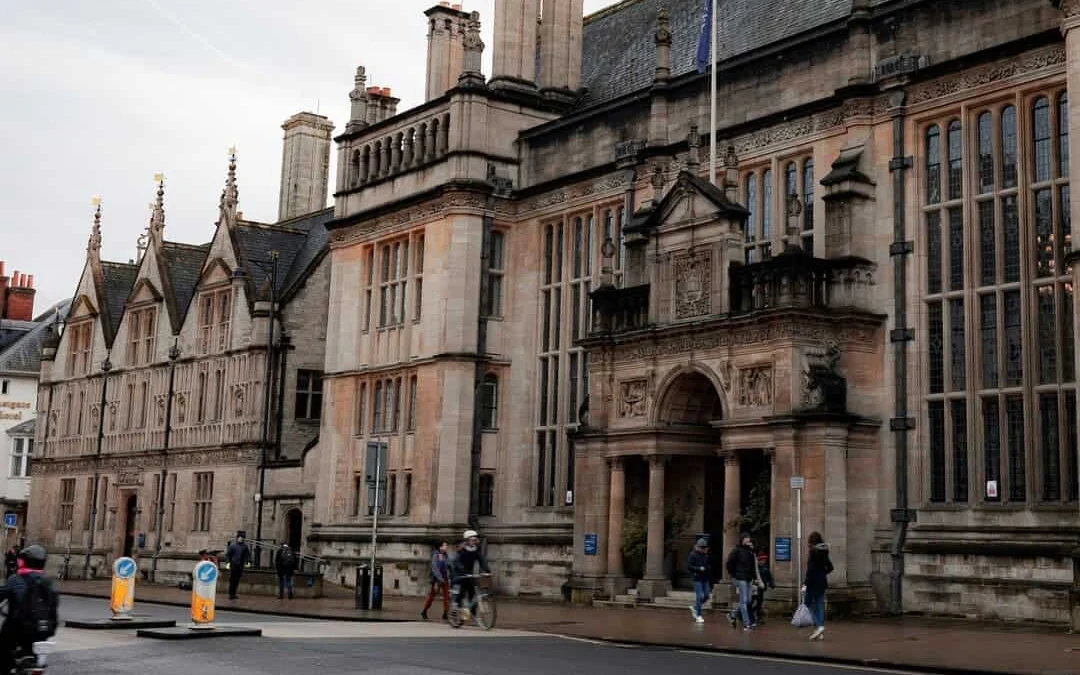Table of Contents
For foreign students, Australia offers a wide variety of study opportunities, with more than 1,100 universities and 22,000 courses to choose from. With Melbourne and Sydney ranked among the top five best cities for students to live in, Australia’s educational institutions rate well in terms of student retention, employability, quality of life, and sense of student identity.
A plethora of high-ranked universities, including the University of Melbourne, the University of New South Wales, Monash University, the University of Sydney, Macquarie University, RMIT University, and many more are host to each of these cities.
The highest standard of education in Australia is a university. Australia has 39 universities: 37 public universities sponsored by the Government and two private universities. Students may take bachelor’s or postgraduate classes on campus (including certificate, postgraduate diploma, master, and doctoral programs). Vocational programs rely on functional knowledge and preparation for business. In government-funded institutions, including TAFE (Technical and Higher Education) or other private institutions, vocational training courses are provided. Most colleges award students credit for college courses. Here is what you should know about the higher education system of Australia.
Reasons for Being a Popular Destination for Higher Studies
- Excellence – The standards of education are among the highest in the world.
- Recognition – When seeking employment or further study, qualifications are widely recognized and accepted.
- Flexibility – Multiple institutions with flexible delivery methods offering a wide variety of courses.
- Protection – Government laws and codes of conduct regulate the sector and protect students.
- Value – Good value for money is the combination of competitive tuition fees and low living costs.
- Lifestyle – A favorable environment, a safe and stable environment, an attractive environment, and friendly people make it a pleasant place to study.
- Multicultural – In Australia’s multicultural society, overseas students are welcome.
- Support – Support networks exist to support learners in all aspects of their stay in Australia.
- Work/travel – Students have opportunities to travel and/or work while they study.
The Australian education system is distinguished from several other countries by the Australian Qualifications Framework (AQF). The AQF was founded in 1995 and is a national policy that covers qualifications from the tertiary education sector in addition to the school leaving certificate, called the Senior Secondary Certificate of Education. There are a number of institutions offering vocational education programs, in addition to offering undergraduate and postgraduate qualifications. These institutions are referred to as ‘colleges’ or TAFE: Technical and Further Education, and have various university entry requirements. Programs on offer are typically job-based or can act as a tertiary degree lead-in. On institution websites, students should pursue individual entry requirements.
Now’s the right time to secure a safe education loan! Fill out the form in this blog TODAY!
TAFE Institutes List
| Australian Capital Territory | Canberra Institute of Technology (CIT) |
| Queensland | CQ UniversityGriffith CollegeTAFE QueenslandTAFE Queensland Gold Coast |
| South Australia | TAFE South Australia (TAFE SA)TAFE South Australia (TAFE SA) – English Language |
| Tasmania | TasTAFE |
| Victoria | Box Hill InstituteBendigo TAFE Chisholm Institute — TAFEFederation TAFEGo TAFE Gordon Institute of TAFEKangan Institute RMIT University — TAFESouth West TAFE Swinburne University — TAFETAFE GippslandMelbourne PolytechnicVictoria UniversityHolmesglen InstituteWilliam Angliss Institute |
| Western Australia | TAFE International Western AustraliaTAFE WA South RegionalTAFE WA Central RegionalTAFE WA North RegionalTAFE WA North MetropolitanTAFE WA South Metropolitan |
| New South Wales | TAFE NSW |
| Northern Territory | Charles Darwin University |
Scholarships and Fees
Australia is an excellent place to enjoy a world-class education and an exceptional quality of life, but before you study abroad, there are some expenses to remember about the higher education system of Australia.
In terms of affordability, Australia does extremely well with housing expenses (such as private rent) and tuition rates equivalent to the United States and the United Kingdom. By working part-time when you graduate, you can also gain a small amount.
A single student allowance of AUD$19,830 a year is proposed by the Australian Government for living expenses. A major portion of living costs is the cost of accommodation; a provision can be made for leisure, emergency, and welfare expenses not provided by the Overseas Student Health Insurance. Budgeting can also be influenced by exchange rate fluctuations. A significant part of your financial planning is understanding the average housing costs in Australia. At one of Australia’s tertiary institutions, the total tuition fees vary between AUD$20,000 and AUD$30,000 a year.
Academic Year
The Australian secondary or higher education in Australia begins in late January or early February each year, while at the end of February/early March, vocational and university students start. Many high schools have three to four terms; there are two semesters for universities and technical colleges. The examinations take place at the end of each semester (June and November), with a 2-4 week break between each semester and a longer summer break between November/December and February. You would be able to select a course that includes a summer school in some cases, which means you can do a third semester in the year.
Education System in Australia
Australian universities anticipate the initiative of students to emphasize individual study. It is never mandatory to attend lectures and even lessons will also be optional: it is in your interest, though, to go, and lecturers will expect you to be wise enough to make the choice by yourself. Yet attendance standards are much more strict in laboratory-based and functional units.
You’re penalized up to 10 percent of the rating you’d otherwise get every day if you don’t bring in work on time. You will immediately fail the unit after a set cut-off point. Tutors are not going to chase you for unfinished assignments but often give you the chance to re-submit the work on a pass-fail basis. Coursework in art sciences is typically research-based, and as opposed to occasional quizzes and testing, the review will usually concentrate on a few, long-form pieces of work.
Plagiarism is considered a severe academic crime whose effects may vary from failure to expulsion from university to failure of an examination. Advice and advice on how to prevent plagiarism during your course should be offered to you, but it is worth exploring the referencing process for your course.
Degree Length
While many universities offer degrees under the higher education system of Australia that concentrate on a specific field and vary in length, Australia’s general bachelor degrees are 3 years long, with an option to do a fourth-year called ‘Honours.’ Acceptance of honors is based on academic merit and consists of taught coursework and a component of a research-based thesis. Honors are counted as part of your bachelor’s degree, and as part of your qualification title will be listed: i.e. Science Bachelor’s Degree (Honours). The word length of the thesis varies between faculty and institution but is usually about the 10,000-15,000 wordmark.
Sometimes it may take longer to complete bachelor’s degrees in more focused study areas, and they have different options for majoring and minoring. For specific course advice and information, most universities have online handbooks that students are advised to consult. Master’s degrees are one-two years in length, either in coursework or research.
Bachelor’s Degree Courses
Usually, an Australian bachelor’s degree is a three-year thesis in a general environment in which students chose a particular subject to work on. This particular field is considered their ‘major,’ and in order to be awarded the certificate, students would be expected to complete a quota of subjects within it. In addition, in order to obtain a ‘minor’ title, students can also fulfill a fixed, lower quota of subjects in another field. You can study a bachelor of creative arts as your major at Flinders University in Adelaide, for instance, while still specializing in visual effects as your minor.
Double Degrees and Overlapping Programs
Double Degree programs are now offered by several institutions as part of the higher education system of Australia, in which students are required to pursue two separate degrees at a time. Double degrees are much longer than a regular undergraduate thesis, as a result.
Some universities also provide simultaneous study programs, such as diplomas and degrees, and offer students the ability to complement their primary studies with studies in another field. For these credentials, candidates must fulfill credit standards and so must spread their coursework over a longer span of time.
Employment
After their studies are finished, many foreign students now have the ability to spend more time in Australia. If you have completed a bachelor’s, master’s, or Ph.D. degree, you can apply for a Temporary Graduate’s Post-Study Work Stream (subclass 485) visa. This may encourage you to remain in Australia to obtain realistic experience working in your field following your studies. Further information is accessible from the Department of Home Affairs on post-study work privileges.
Learning English
When preparing for your higher education system of Australia, learning English is definitely the most critical aspect. If your English language proficiency is limited, you might be encouraged to enroll in an English language school before beginning your study program.
Australia has about 100 private centers for the English language around the world. For those interested in enhancing their English language skills, universities and TAFEs offer classes.










0 Comments